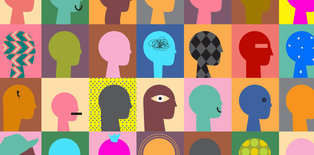Conversion Disorder in Children: The Connection Between Physical Symptoms and Emotions

Many of us have experienced an emotional concern that causes a physical issue. For instance, stress might cause a headache or gastric distress in some individuals. As adults, we might recognize the cause of our physical pain to be emotional. In children, however, it may be difficult to know when a physical symptom has an underlying emotional root cause.
Children who routinely experience stomachaches, headaches, or lethargy may actually be dealing with an emotional issue, such as extreme anxiety, stress, or depression. When these emotionally based physical symptoms appear neurological, this is known as functional neurological disorder (FND). FND is otherwise referred to as conversion disorder since emotions are “converting” into physical symptoms.
A connection between emotions – anxiety in particular – and physical symptoms is fairly common. Yet, we don't really talk about it all that much. As someone who frequently treats kids with this condition at the Hasbro Children's Partial Hospital Program, a day treatment program for kids with emotional and physical challenges, one of my goals is to try to normalize this for families as something we all experience in some way. In turn, we can help kids understand that they don't have to be ashamed for experiencing these physical symptoms, and, most importantly, that we can do something about it.
Helping Kids and Parents Navigate Functional Neurological Disorder (Conversion Disorder)
Explaining conversion disorder and the emotional/physical connection to children is not always an easy task. We sometimes use the analogy of a soda bottle to help explain it.
Throughout the day, a child may go through various emotions that start to pile on top of each other, like a soda bottle being shaken and accumulating “fizz.” If there is no way to express and manage these emotions, that is, “to let the fizz out,” the soda bottle will become tight, and might even eventually explode. Other analogies we use to help explain this include an erupting volcano or a bucket overfilled with water.
For older kids and their parents, it can be helpful to discuss the mechanics behind the limbic system, which is the emotional center of the brain. An overcharged limbic system can lead to physical changes in the body via a structure called the thalamus, which serves as a motor and sensory “relay center” for the brain.
This is a scientific way for some families to understand that this connection between emotions and physical symptoms is real. The fact is, when emotions build up and you can't figure out what to do with them, this really does have an impact on your body. It’s not “all in your head!”
Strategies to Manage Emotional Concerns and Physical Symptoms
Returning to the soda analogy, it’s important to help identify strategies for patients to safely and healthfully “decarbonate.” There are several ways to achieve this.
Recognition and communication of emotions
Understanding their emotions and then communicating what they are feeling is key for all children, but particularly those struggling with emotionally based physical symptoms. This doesn’t have to be a face-to-face conversation with a therapist or parent. It can also be achieved through journaling, artwork, or music expression.
Relaxation training
There are several strategies that children can learn which can help them understand that they can change their own bodily responses to stress, and that they can practice during “non-stress” times as well. These include deep breathing, progressive muscle relaxation, and guided imagery, among others.
Instilling mindfulness
Particularly when we are stressed, our brains tend to “drift” to settings other than where we currently find ourselves and what we are currently doing, which can contribute to even more stress, anxiety, and the physical symptoms that come with this.
When kids become more aware of what they’re thinking and feeling in the moment, it helps them to work through both emotional and physical sensations they might be experiencing. It’s helpful if kids engage all five of their senses when training their brains to focus on their present setting.
Thought restructuring
The process of thought restructuring involves noticing “automatic” negative and unhelpful thoughts that one might be having, and developing “counterthoughts” that are more realistic, less “catastrophic” and more helpful.
I might, for example, automatically conclude if I am late to work or school that my whole day will be terrible. If I instead “restructure” this thought to tell myself that the beginning of my day may be challenging but that it will probably get better from there, this “counterthought” will likely be helpful for me both emotionally and physically as I go about my morning.
Help for parents
All these strategies are available to parents as well. Support groups can be especially helpful, and at the Hasbro Children's Partial Hospital Program, we run a parent support group on Tuesdays and Thursdays from 8:15 to 9:00 a.m., where we focus on letting parents know what we're teaching their kids so they can model it and use it at home too.
Ultimately, we want to assure parents that the physical/emotional phenomenon is absolutely real. The physical symptoms their child is experiencing are actually happening in the body. But perhaps more importantly, we also want to let them know there are things we and they can do about it. For more information on parent-focused assistance, call 401-444-8638.
Integrated Medical/Psychiatric Initiative
If you think your child is experiencing physical issues due to emotional challenges, we can help. Learn more about our Integrated Medical/Psychiatric programs at Hasbro Children's Hospital that address the needs of children and adolescents who are struggling with both physical and emotional problems.

About the Author:
Matthew D. Willis, MD
Dr. Matt Willis is the co-director of Hasbro Children's Partial Hospital Program.
Lifespan Living Newsletter
Conversion Disorder in Kids

Listen to the Podcast
Soda bottles, volcanoes, and neuroanataomy. How emotional distress causes physical symptoms in kids, and what to do about It.
Find a Doctor

The right provider is in our network
Search more than 1,200 providers in our network.



